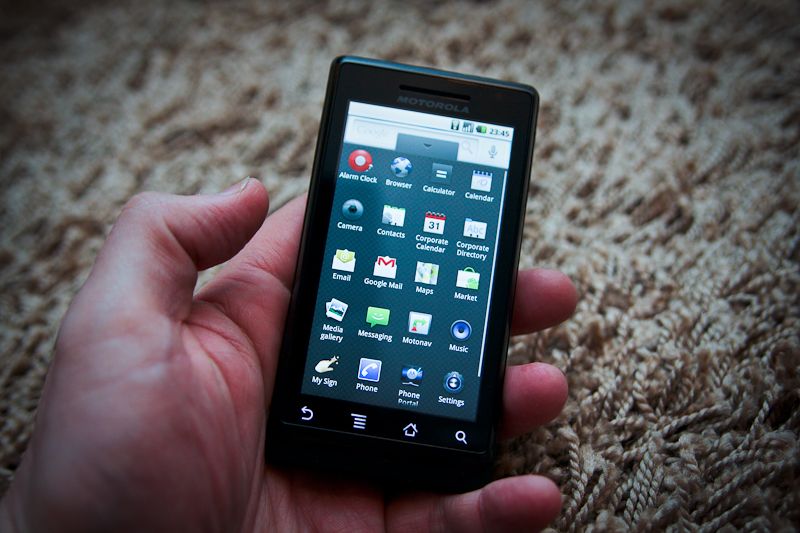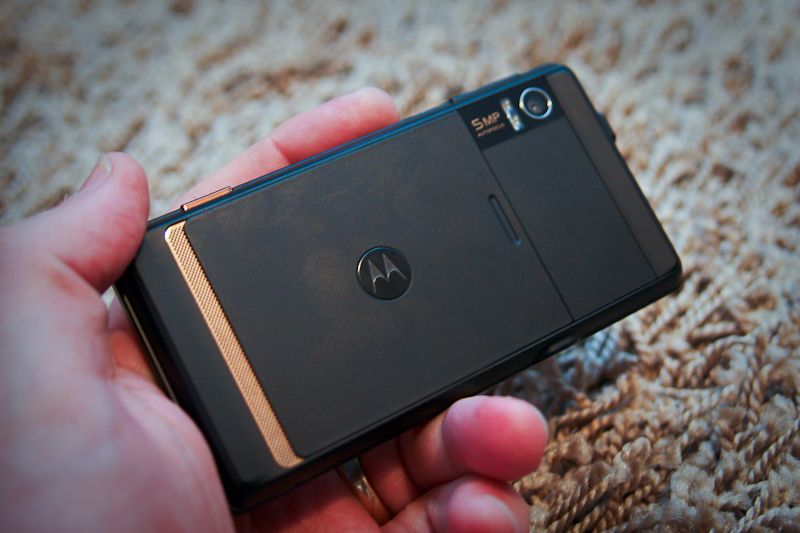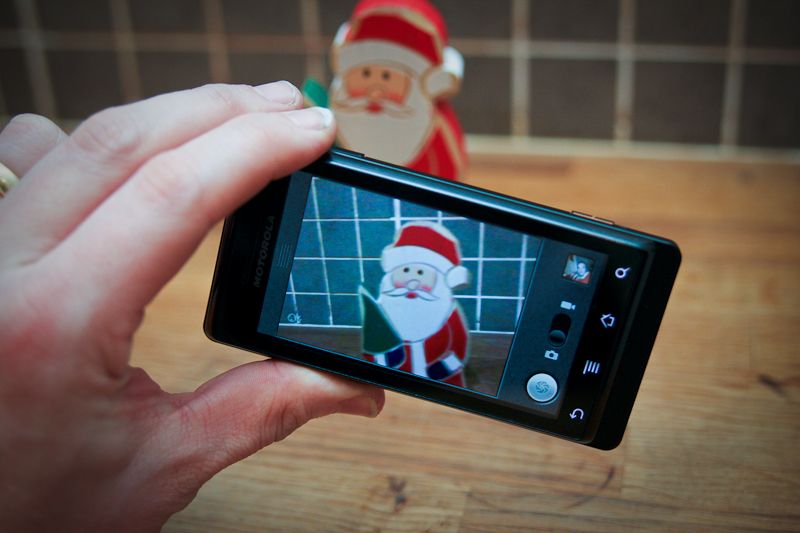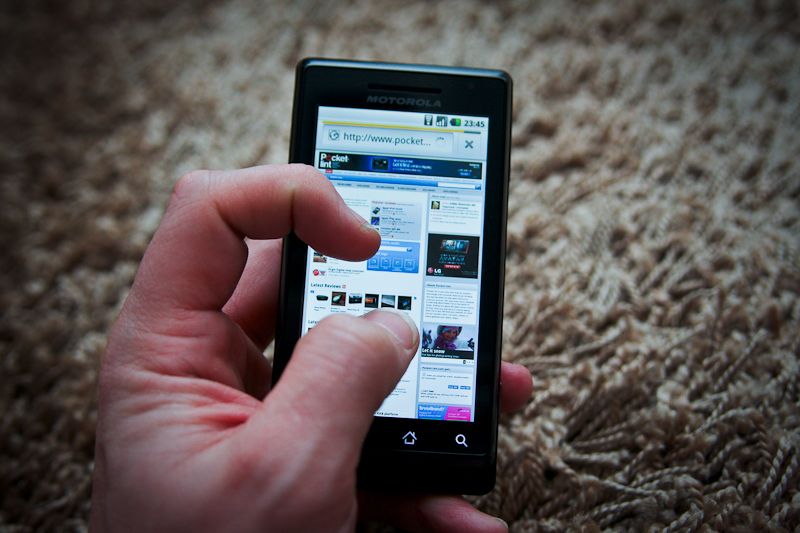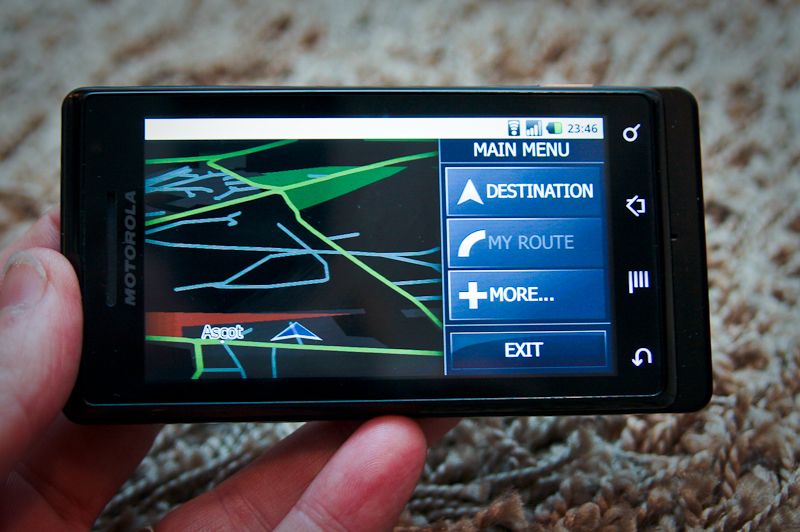The Motorola Milestone has finally hit the shores of Great Britain thanks to Expansys, but has the Droid - as it is called in the US - simply become the Milestone, or is there more beneath the surface? Having played extensively with the Motorola Droid we've turned our attention to the Milestone.
Our quick take
Where the UK bound Motorola Milestone differs over the US Droid is mainly in its multi-touch support and the lack of CDMA support (i.e., so you can run it on UK operators). While the lack of Google Maps Navigation is annoying, the inclusion of Motonav means that it's no real deal breaker here.
Like the Motorola Droid, where the Motorola Milestone succeeds is that it offers you a state-of-the-art experience of Android 2.0 on any network, as it isn't currently locked as an exclusive to any one operator.
Against the iPhone, which is a multimedia internet device first and a telephone second, that will be a deal clincher for many.
We tested the handset on both Vodafone and Orange and were happy with the performance of the phone on both networks.
In fact the best way to think of this handset is the true sequel to the T-Mobile G1. For some, especially those who don't like the idea of their OS being meddled with (a la the Sense UI), this will be their calling. To others looking for that graphical eye candy you won't get it here.
This is a fantastic phone, but would we personally choose it over the Hero? Not if the Hero, as suggested by HTC, will be getting Android 2.0.
If you aren't after a keyboard, there should be a new wave of Android handsets being announced in February.
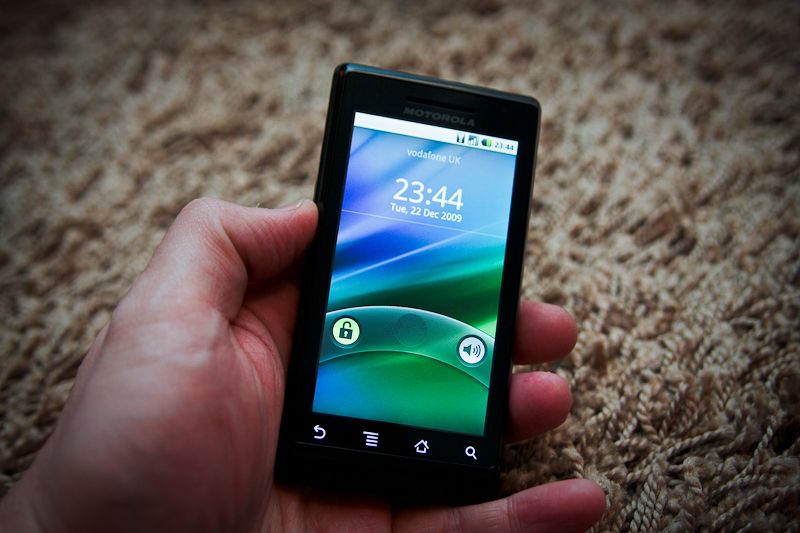
Motorola Milestone - 4.5 / 5
| FOR | AGAINST |
|---|---|
|
|
When Google released its first Google phone with T-Mobile in 2008 the industry had high hopes. Here was an open source platform that would change the face of the industry and give Microsoft, Apple and anyone else who happened to be interested, a run for their money.
The problem was, that while the concept was there, the execution was poor. The G1 was a dog of a handset with a poor design and while sporting a promising interface, was lacking in many ways. Here at Pocket-lint we gave it a 5/10 citing the handset as a "not consumer ready device" and one that you should steer clear of:
"Our suggestion would be to wait 6 months to a year and by then you'll have so many handset choices (perhaps even the Touch HD) that give far better, sexier, more consumer focused offerings, meaning this will be old news and look, well, rather crap. A great OS let down by a shoddy handset design".
And guess what? 6 months down the line and we have started to get those far better handset choices in the guise of the HTC Hero and Samsung i7500. While the Droid found a home at Verizon in the US, here in the UK the Motorola Milestone is still without an operator.
Motorola might have been "allowed" to slap a user interface on the CLIQ (DEXT in the UK) but here, as with the US Droid, they haven't even been allowed so much as a nuance. Motorola's job has been hardware and hardware alone.
The first difference is the name, gone is the Droid branding, the red eye on start-up and even the boot-up "Droid" phrase.
What hasn't changed is the main styling of the handset. The Milestone sports all the exciting features that you would expect (more in a moment) all of which have been shoehorned into a handset that is surprisingly compact, but distinctively retro in its appeal. While the iPhone and iPhone 3GS is all about curves, the Milestone is about angles. It's not dainty by any stretch of the imagination.
Slightly thicker than the iPhone, it is weighty in the hand and comfortable in the pocket. It's not small, but it's not HTC HD2 massive either.
Rather than opt for a white or silver, it's black and "brown sugar". That "brown sugar" will come across as "bling gold" though, and it's the first time we've seen gold on a phone that wasn't attempting to charge us thousands for the privilege. We're sorry to say that it's a bit too ostentatious for our liking. Luckily it's really only kept to three small details - the speaker grill on the rear, the d-pad on the front and the dedicated camera button.
The design, like a robot, has no emotion.
So what have they put inside? The key tech specs include a massive 3.7-inch screen, slide-out QWERTY keyboard, Android 2.0 and a processor fast enough (550MHz) to power it all. Storage is offered by a 16GB microSD card that comes pre-installed (not hot swappable) and there is of course the usual bevy of connectivity technology such as GPS, Wi-Fi, Bluetooth and quad-band, unlike the Verizon US version it has GSM capabilities so you can run it on any network in the UK.
There is a 3.5mm jack and speaker for the music savvy and a small green light that flashes when you've got a message or alert of some sort. You can turn it off, but it will keep the BlackBerry switchers happy.
Gaming-wise the processor is powerful enough to cope and with built-in Open GL support for the games we played (Robo Defence amongst others - the same as the Droid we tested). With only 256MB of available memory for apps, the move could limit what games (i.e., high octane graphic-filled) will work. It will certainly make developers' lives harder.
On the camera front you get a 5-megapixel camera with the ability to capture video at DVD quality up to 24fps and zoom in 4x via a digital zoom. There is a dual LED flash and it features automatic focus.
Within the camera application itself, which is turned on by pressing the dedicated button on the side of the handset, you have some control over the way the camera acts. There is of course the usual still and video modes and a quick access point to the photo galleries. There is also the ability to change the settings of your images like White Balance, Scene mode, Flash mode, Color effect, Store location, Picture size, Picture quality and Focus Mode. Scenes offered include Portrait, Night, and the like but there is no Macro.
In use and the camera struggled to focus on subjects. You get a warning and the ability to take an image still, but what's the point if it's blurry? This is a nice addition rather than a reason to buy, just like most phones that aren't camera focused. Compact cameras don't have too much to worry about just yet.
Then there is the slide-out QWERTY keyboard. Using landscape it instantly reminds us of the HTC Touch Pro from 2008. The keys are arranged across four rows and laid flat. You'll either love or loathe this as it doesn't give you any indication of where you are on the keyboard - one of the key reasons for going QWERTY over touch. Next to the keyboard there is an overly-large d-pad.
Of course you don't really have to ever slide-out the keyboard as the phone's 3.7-inch touchscreen combined with Android's landscape and portrait keyboards, means don't need you to. The screen is bright and as crisp as any other screen on the market that isn't OLED. Beneath the screen are four quick shortcut keys - back, menu, home and search and they get you to where you want to go quickly. All are touch-sensitive and all are built into the glass screen so it's a continuation, like the BlackBerry Storm 2, rather than four separate buttons.
Physical buttons, aside from the hidden keyboard, are kept to a minimum - dedicated camera, volume and lock. Even though it has a QWERTY keyboard, those keys are really just for that. There is no "Mail" key or five ways of accessing the home screen as can be found on your average Nokia.
If you've used Android before you will know what to expect. As we said at the beginning, this is very much a Google experience. There are no tricks, no Sense UI or Motoblur twists. You get a desktop, and the slide-out draw for your applications and that's it.
Sporting Android 2.0 there are a number of new features that have been added to the mix to justify getting this over the HTC Hero - for the time-being (HTC have confirmed 2.0 will be coming to the Hero). The OS is quick and nippy in use.
Android 2.0 offers more functionality improvements over 1.6, rather than visual flair or excitement in the same way that perhaps Apple concentrates on. But it's the little things that can soon add up to make it better than the sum of its parts.
One of those is the ability to mute the handset with a swipe of your finger before unlocking it. The other is the search box that like the Palm Pre and iPhone allows you to search the phone, and its data straight away. Where it beats the iPhone is that it automatically starts searching the Web for you, integrating those results into the mix as well.
Other nice touches are email and contact syncing with multiple accounts from multiple sources, Exchange sync support, a combined inbox for those multiple email accounts, decent calendar, quality address book UI, loads of camera functions including flash, digital zoom and a macro mode, nice virtual keyboard, excellent graphics, three-point multi-touch, a polished browser and Bluetooth 2.1.
Setting up email was (almost) straightforward. Gmail users will be able to punch in their username and password, while Google Apps users will have to make sure they are running all the right software on their domain.
If you are a Google Apps user it will automatically sync everything to the phone. Contacts, calendar dates, the lot. It's very pain free, in fact the most pain-free install we've ever experienced. Multiple calendars, multiple contacts, and over 10,000 emails accessible in about 60 seconds. This is very much the essence of Android for those already on the Google system.
As for browsing the phone has you covered too, better in fact that the US version, as the Milestone sports multi-touch browsing, something that is missing from the US version, however you still don't get multi-touch within other applications like the image gallery.
YouTube videos are playable and loaded into the handset's media player, this being a painless experience.
One of the biggest elements to gain excitement on the launch of the Droid by Motorola and Android 2.0 was the introduction of Google Maps Navigation. A shame then that you don't get it here on the Milestone as the Google Maps Navigation is US only. Instead Motorola have installed Motonav, a basic, but functional, GPS software package. It's not TomTom, or Google Maps Navigation, but it will save you from getting lost.
Being the most advanced Android handset on the block currently has its benefits, mainly that you have full access to virtually all of the apps in the Android Marketplace. While our recent review of the HTC Tattoo found that there is currently plenty missing from the lower end phones, this didn't seem to be the case here.
So you've got your new phone, it's a funky new shape and there isn't the massive eco system. While the Milestone doesn't come with speaker docks and cases, it will come with the two accessories being offered Stateside - a docking station for your nightstand, the second is a windscreen cradle so you can use the Google Maps Navigation.
The docking cradle loads a dashboard style interface that lets the phone become a glorified alarm clock. It works too. You get a big clock, the weather, access to your music and photos as well as the ability to dim the light so you can sleep. There is also a quick button to the alarm settings. We really like it. It's a neat idea first seen on the BlackBerry Bold and one that is welcomed here. The car mount does a similar thing and loads the navigation interface. It doesn't, however, go a step further - like the TomTom for iPhone cradle - and boost the GPS signal, but Google has confirmed to us that it would be possible within Android to do it if a manufacturer wanted to.
To recap
This is a fantastic phone that brings multi-touch to the mix, however without Sense Ui, this is Android at its purest, for better or worse

